





| Drone Fly (Eristalis tenax (Linnaeus, 1758)) |






|
|
Scientific name: Eristalis tenax (Linnaeus, 1758) Common name: Drone Fly French name: Eristale gluante Order: Diptera Family: Syrphidae Wingspan : 11-16 mm. Biotope: Larvae called rat-tailed maggot live in stagnant putrid water. They feed on bacteria living in water polluted with organic matter. Imagos can be seen on all kinds of flowers. Geographic area: Europe, introduced in North America. Observation period : All year long, but mainly during hot summer days. |
The Drone Fly looks like a big Honey Bee. The body is dark brown with two large yellow marks on both sides of the second segment of the abdomen. The abdomen tip is black. There are two vertical rows of hairs on the eyes. This is one of the way to tell apart Eristalis tenax from other very similar species like Eristalis lineata, pertinax, jugorum, cryptarum, abusivus, similis. The tip of the leg is black, it is yellow on Eristalis pertinax. There is a black stripe between the eyes, but it is bolder than the one on Eristalis pertinax. The small antennae look like a single hair, they are feathery on Eristalis pertinax. Adults can over winter. Eristalis tenax is very migratory, on the contrary Eristalis pertinax is sedentary. |
| [To know more about the Drone Fly] [Next picture] [Top] |
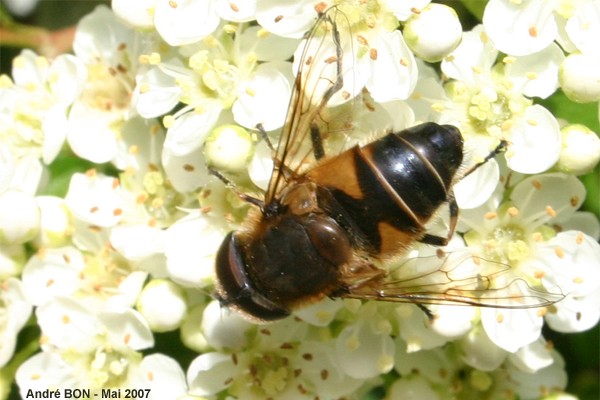
|
Here is another visitor of Pyracantha flowers. |
| [To know more about the Drone Fly] [Next picture] [Previous picture] [Top] |
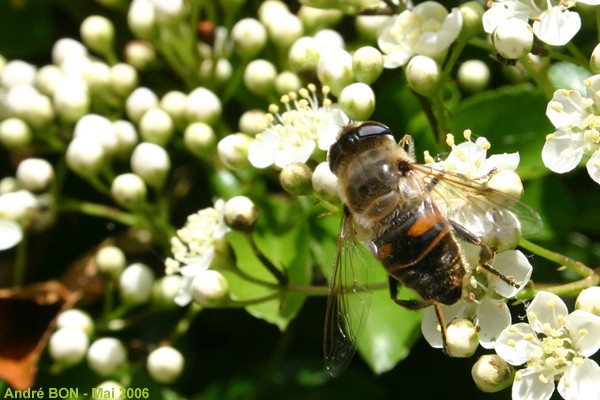
|
Without true macro lenses, it is very difficult to shoot close view so that you can be 100% sure of the identification of the species. |
| [To know more about the Drone Fly] [Next picture] [Previous picture] [Top] |
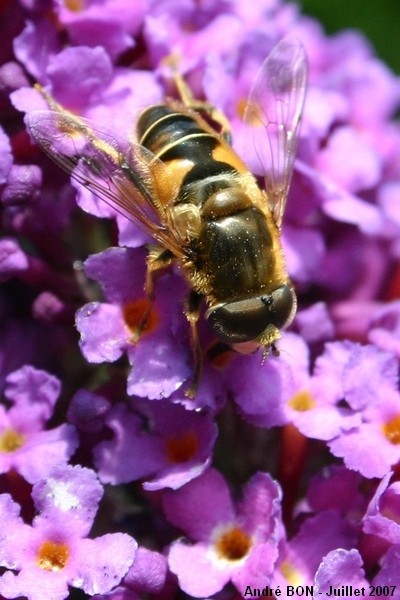
|
I have told this species apart based on the row of hairs on the eyes and on the non-feathery arista. The touching eyes on the upper side indicate one male. |
| [To know more about the Drone Fly] [Next picture] [Previous picture] [Top] |
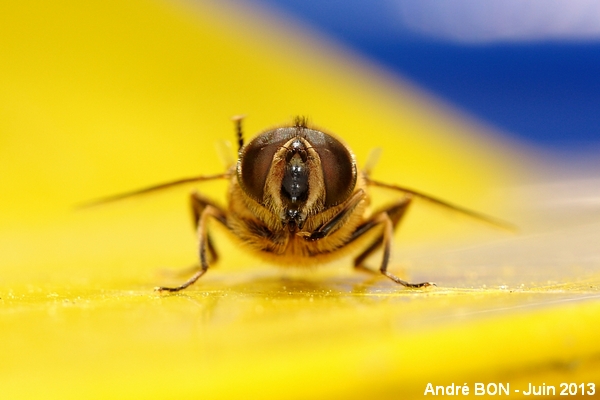
|
Here is a nice front view on the top of the yellow trash box (for recyclable litter). You can see the non-feathery arista, the two vertical rows of hairs on the eyes and the bold black front stripe. So this is Eristalis tenax. |
| [To know more about the Drone Fly] [Next picture] [Previous picture] [Top] |
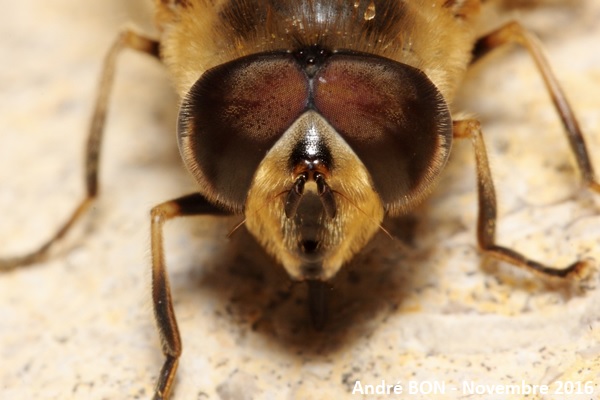
|
Another close-up front view. |
| [To know more about the Drone Fly] [Previous picture] [Top] |
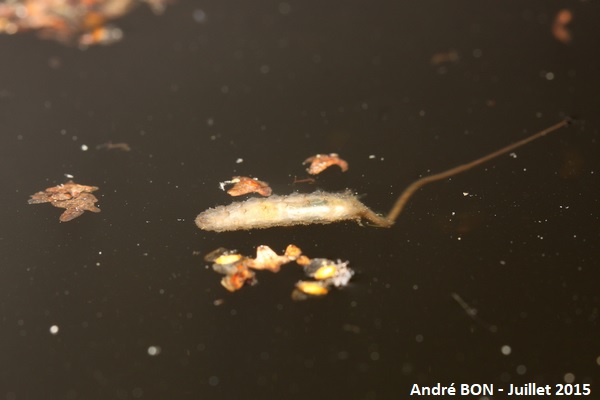
|
There is no cover over my rain water tank. I will put one when Tiger Mosquitoes will be known to fly in the region. In the meantime I have been able to observe rat-tailed maggots, typical form of Drone flies larvae. |